Author: Brian Hall
The grain most commonly associated with beer is barley, which comes in a multitude of varieties that allow brewers to make everything from the palest Pilsner to the inkiest Stout. However, another type of malted grain gained prominence in the 16th century when Bavarian monks began using it to craft unique styles.
Wheat malt is a grain known for having a higher protein content than barley malt, hence its use by many brewers in smaller proportions as a way to enhance a beer’s foam quality. According to some reports, larger doses of wheat malt can contribute a subtle tartness to beer, not necessarily to the point of being sour, but just a hint of something sharp that can add an accentuating touch to beer.
Often referred to as a non-barley base malt, wheat malt has a high enough diastatic power to self convert and thus can be used as the primary or even sole grain in a recipe. However, even for styles noted for being heavy on wheat, brewers tend to include a portion of barley malt, perhaps as a way to reduce the risk of stuck sparge due to wheat being huskless.
My use of wheat in brewing has largely been as an adjunct to barley malt, making up a relatively small percentage of the grist for the purposes of improving head formation and adding a creamy texture to my beer. Having never done a true comparison, I was curious if wheat malt was actually having these effects and decided to test it our for myself!
| PROCESS |
To evaluate the differences between a beer made with a portion of wheat malt and one that was made with no wheat malt.
| METHODS |
Kölsch is a clean, crisp, pale style of beer that’s modeled to some degree after Pilsner, the biggest difference being it is typically fermented at a warmer temperature. Whereas some view wheat malt as having no place in this traditional style, there’s some evidence it was historically used at rates as high as 20% of the grist. For this reason, I made a Kölsch inspired beer for this xBmt.
Huh, Wheat
Recipe Details
| Batch Size | Boil Time | IBU | SRM | Est. OG | Est. FG | ABV |
|---|---|---|---|---|---|---|
| 5.5 gal | 60 min | 25.7 IBUs | 3.9 SRM | 1.057 | 1.015 | 5.5 % |
| Actuals | 1.057 | 1.012 | 6.0 % | |||
Fermentables
| Name | Amount | % |
|---|---|---|
| Pale Malt (2 Row) US | 4.25 lbs | 38.64 |
| Pilsner (2 Row) Bel | 4.25 lbs | 38.64 |
| White Wheat Malt | 2.5 lbs | 22.73 |
Hops
| Name | Amount | Time | Use | Form | Alpha % |
|---|---|---|---|---|---|
| Magnum | 13 g | 60 min | Boil | Pellet | 14.5 |
| Saaz | 28 g | 10 min | Boil | Pellet | 3.3 |
| Saaz | 28 g | 0 min | Boil | Pellet | 3.3 |
Yeast
| Name | Lab | Attenuation | Temperature |
|---|---|---|---|
| Dieter (G03) | Imperial Yeast | 75% | 60°F - 69°F |
Notes
| Water Profile: Ca 58 | Mg 5 | Na 8 | SO4 73 | Cl 68 |
Download
| Download this recipe's BeerXML file |
As the water was being filtered the morning of brew day, I weighed out the grains for each batch, using additional Pilsner malt in the non-wheat batch to achieve the same weight.
Once the full volume of water was in my kettle, I adjusted it to my desired profile then began heating it with my heat stick.
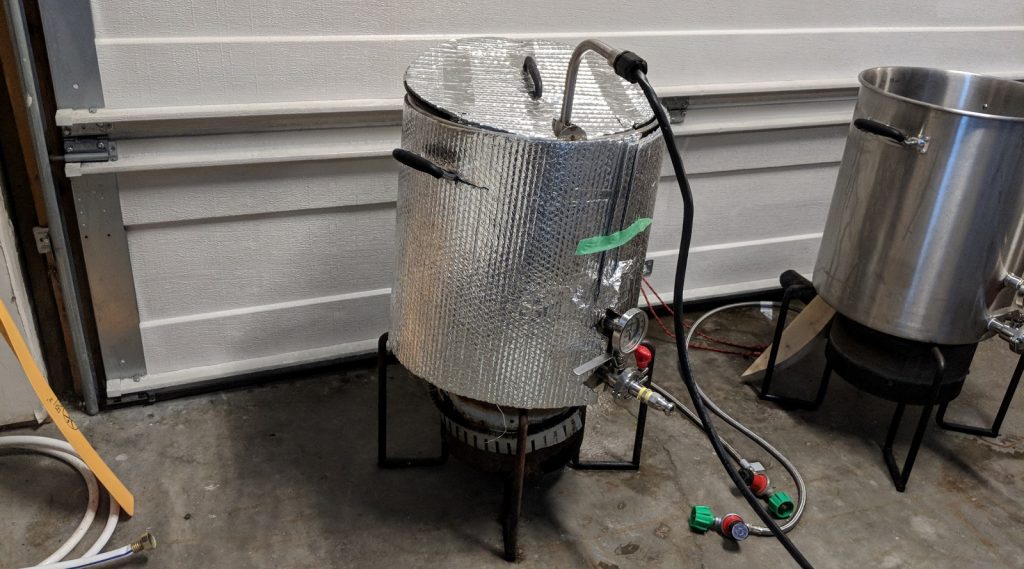
With the water nearing strike temperature about 3 hours later, I milled both sets of grain in preparation for the mash.
After thoroughly incorporating the grains into each set of water, I checked the temperature of both mashes and was pleased to see they were identical.
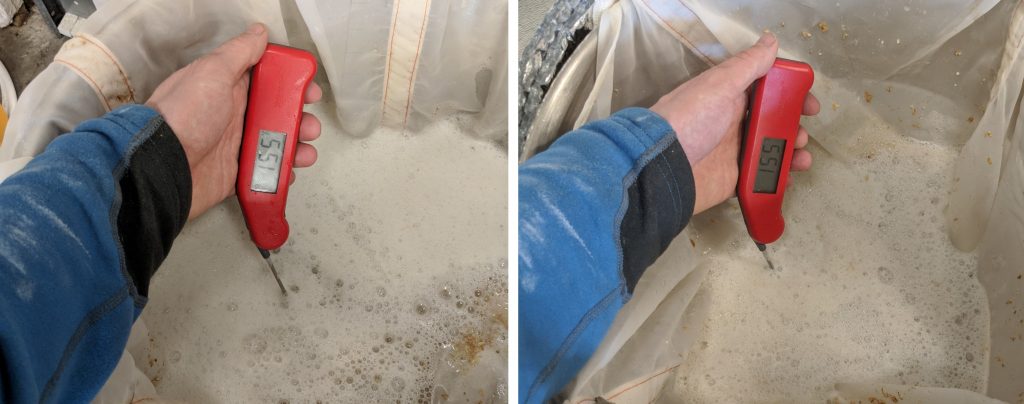
I took pH readings 15 minutes into each mash that showed the mashes were more similar than different.
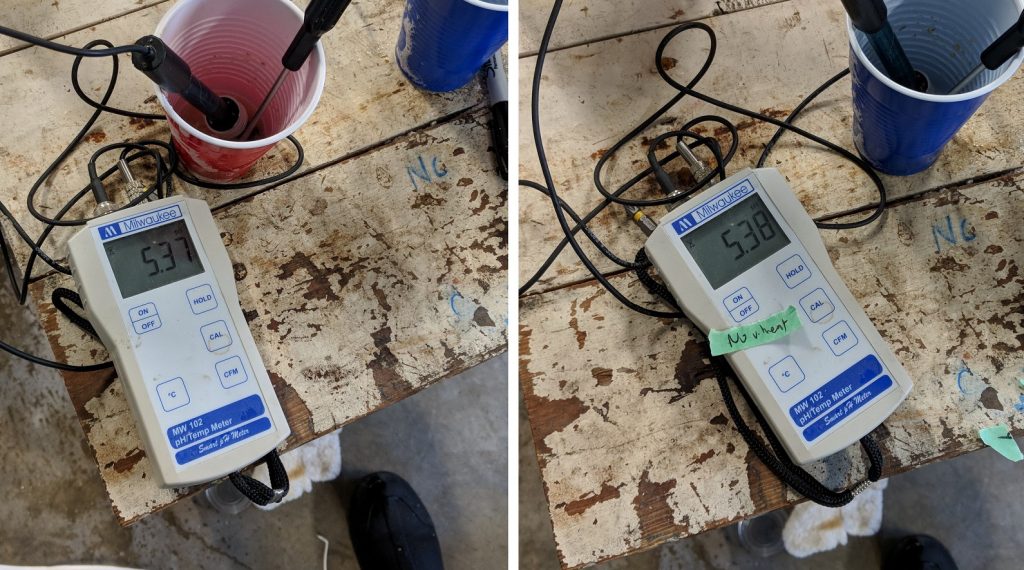
The mashes were left to rest for a total of 60 minutes.
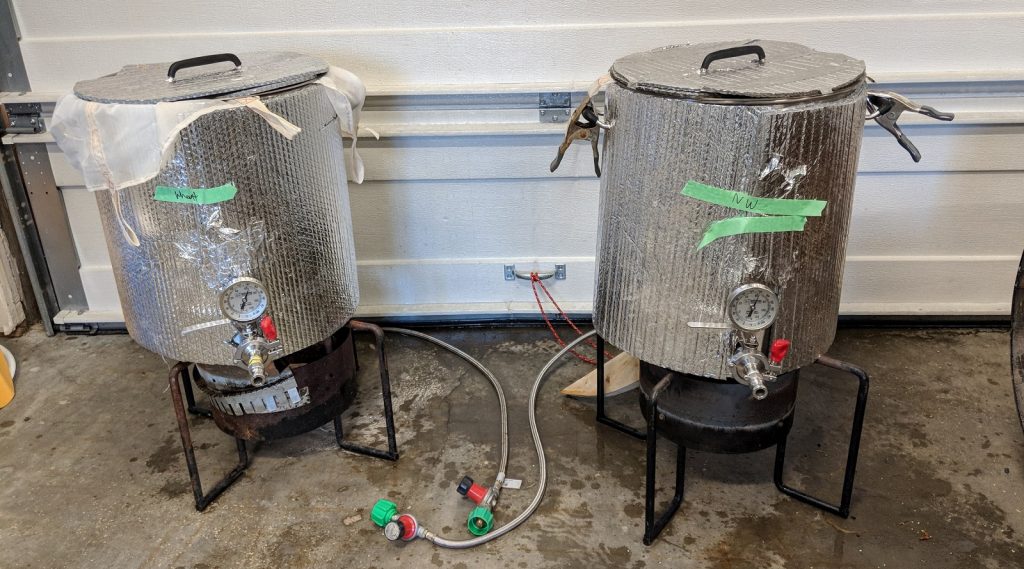
Once the mash rests were complete, I removed the grain bags, connected propane tanks, then began heating the worts. Both worts were boiled for 60 minutes with hops added at the times stated in the recipe.
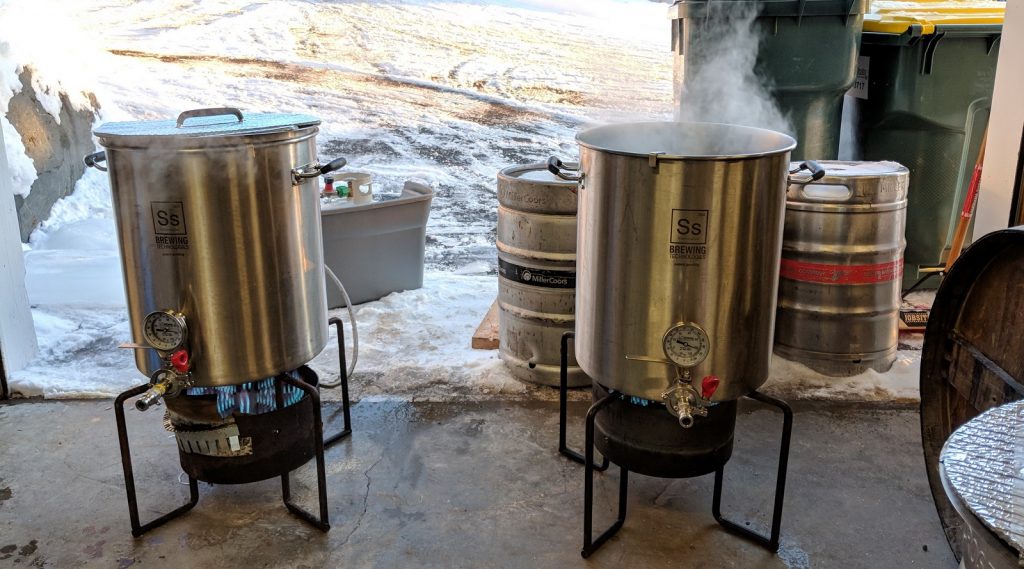
At the end of each boil, I quickly chilled the wort with my immersion chiller.
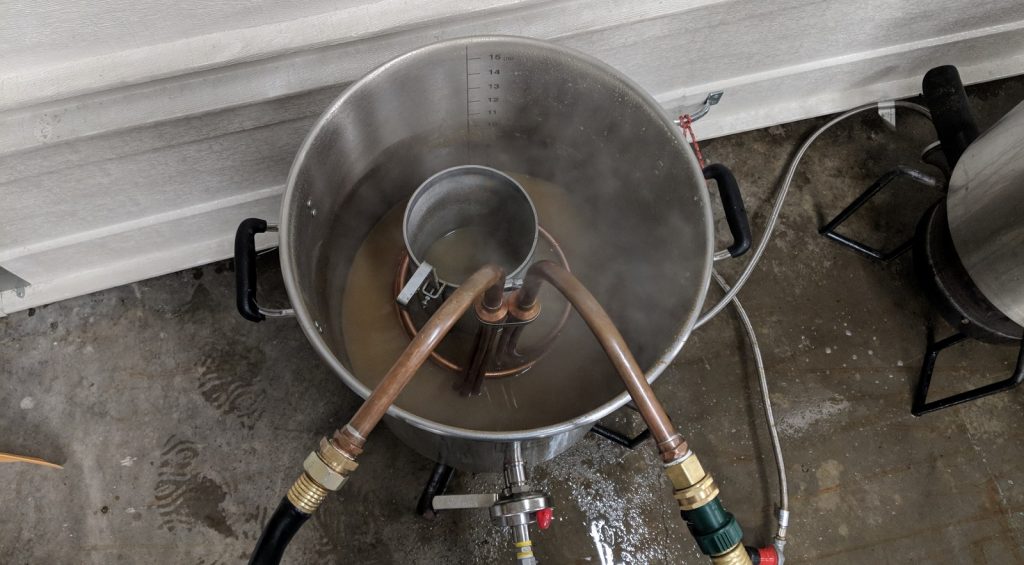
After racking identical amounts of wort to separate 6.5 gallon/25 liter glass carboys, I used some leftovers to make vitality starters of Imperial Yeast G03 Dieter.
It was at this point that I took refractometer readings of both worts, which revealed a slight difference.
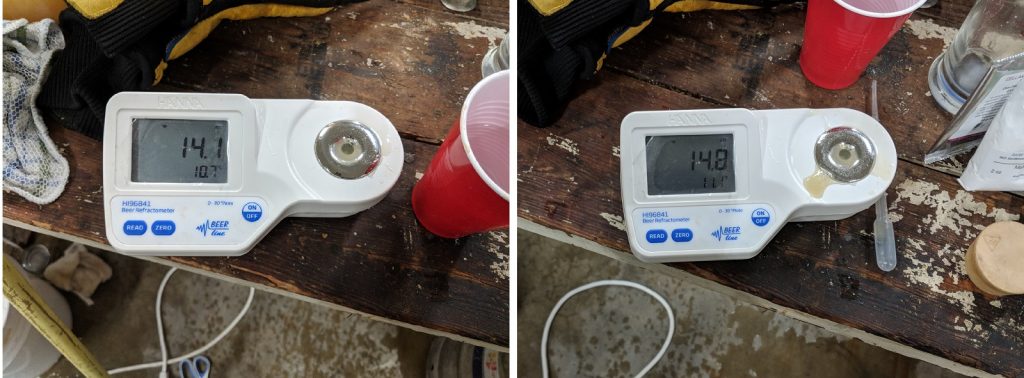
The filled carboys were placed in my chamber controlled to a 56°F/13°C and the yeast was pitched. Activity was noted in both batches the following day and fermentation proceeded similarly. After 2 weeks, there was still some kräusen left atop both beers, though it seemed fermentation had finished.
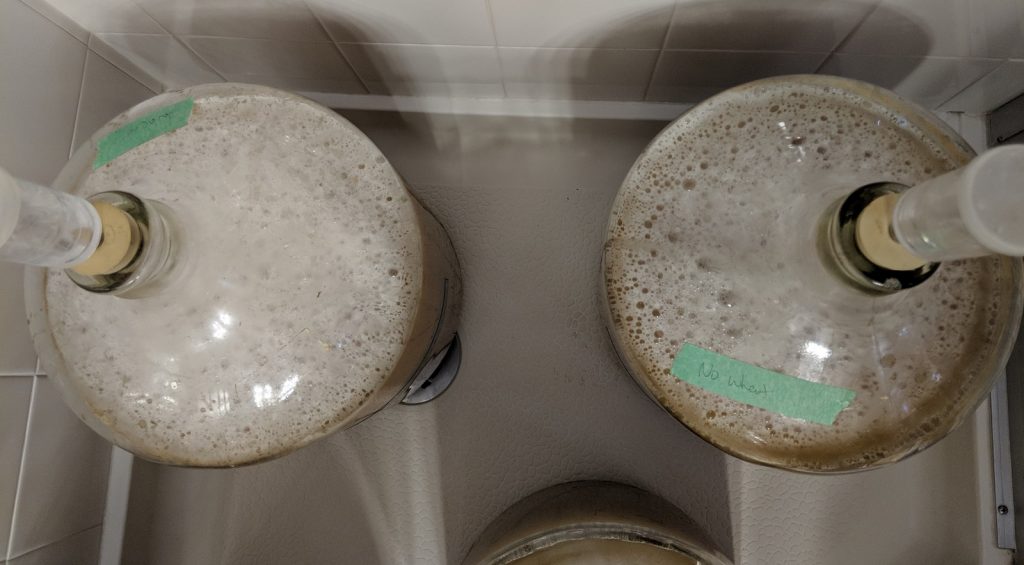
I took hydrometer measurements at this point showing the beers reached a similar FG.
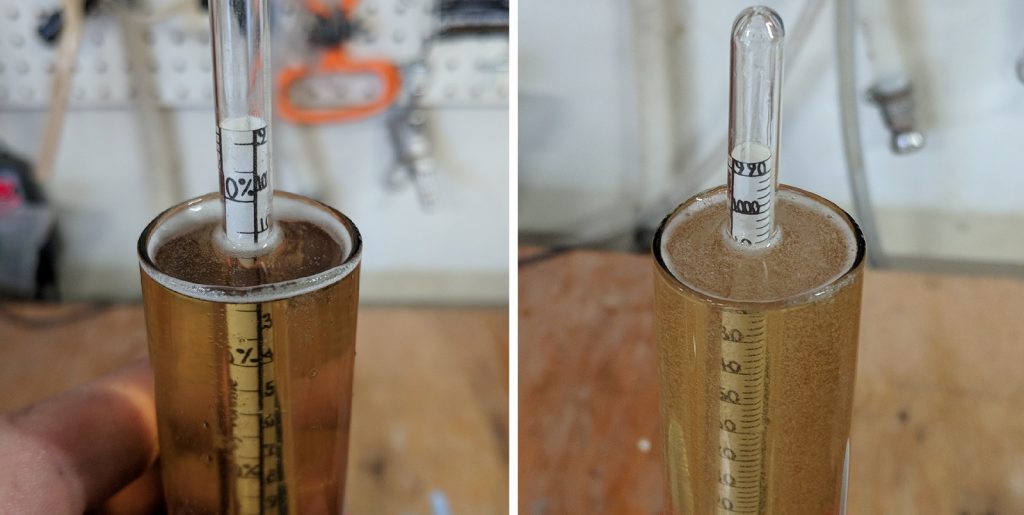
The beers were left alone another couple days before I confirmed no change in gravity and moved ahead with kegging.
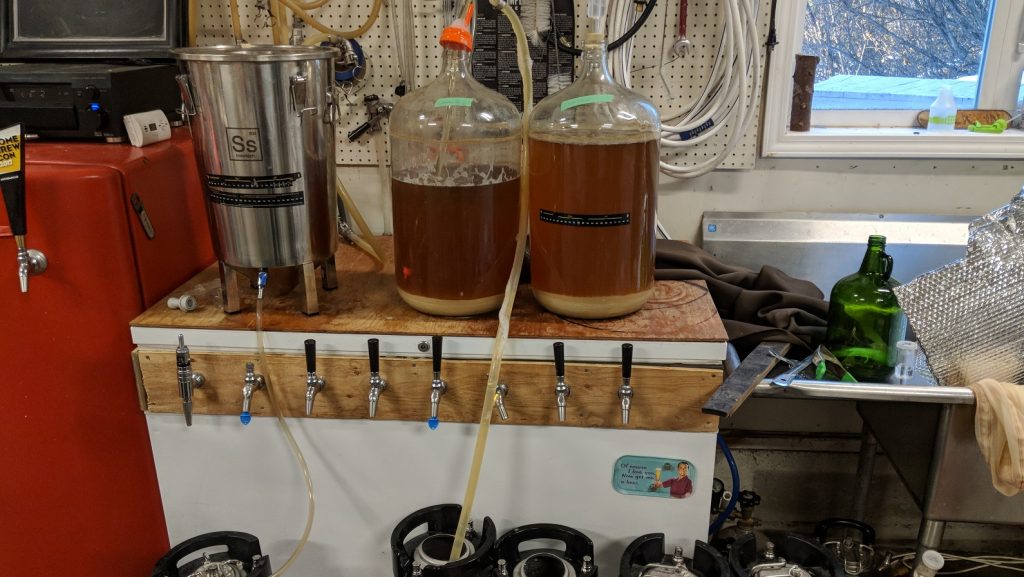
The filled kegs were then placed in my cool keezer and burst carbonated overnight before I reduced the gas to serving pressure. Given the variable, I skipped fining these beers with gelatin and instead let them condition for a few weeks before collecting data. The difference in appearance went so against my expectations that I quadruple checked to make sure I was pouring the correct beers.
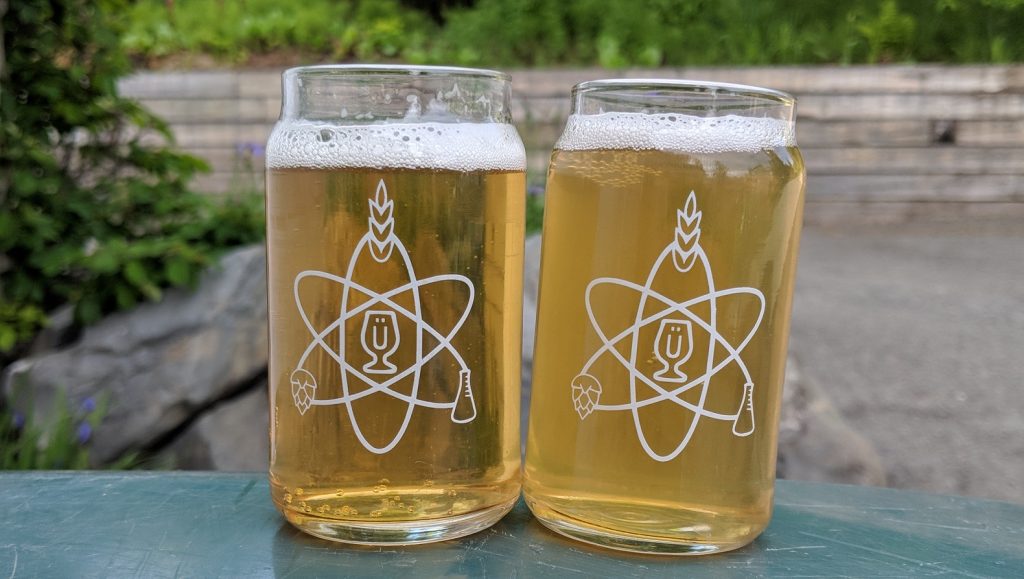
| RESULTS |
A total of 29 people of varying levels of experience participated in this xBmt. Each participant was served 2 samples of the beer made with wheat malt and 1 sample of the beer made with no wheat malt in different colored opaque cups then asked to identify the unique sample. At this sample size, 15 tasters (p<0.05) would have had to identify the unique sample in order to reach statistical significance, though only 11 (p=0.36) made the accurate selection, indicating participants in this xBmt were unable to reliably distinguish a Kölsch-style beer made with 23% wheat malt from one made with an equal amount of additional Pilsner malt in its place.
My Impressions: When sampling the beers at kegging, I thought the one made with wheat malt had a sharper finish with that classic Kölsch fruitiness while the version made without wheat reminded me more of a standard Pilsner with a crisp, clean finish. However, all of that could be a wad of clams because I only picked the odd-beer-out in 1 out of 3 triangle test attempts.
| DISCUSSION |
Wheat has an important place in brewing and has been used for eons in the production of styles like Bavarian Hefeweizen and Belgian Witbier. More recently, brewers have been adding small to moderate doses of wheat malt to their recipes under the belief it contributes something of substance to their beer, whether that’s improved foam, a doughy flavor, or even haziness in NEIPA. As someone who never really questioned these claims, I was surprised with the fact neither tasters nor I could reliably distinguish a Kölsch made with 23% wheat malt from one made with an all Pilsner malt grist.
As I thought about what might be at play here, other than the obvious “it just doesn’t matter that much,” I wondered if maybe wheat presents itself differently in certain styles, namely those fermented with classic “wheat beer” yeast strains. A common characteristic in these styles is a clove-like phenol called 4-vinylguaiacol (4VG), which is formed by the thermal or enzymatic decarboxylation of ferulic acid. While both barley and wheat contain ferulic acid, one study found that beers made with a larger proportion of wheat resulted in higher 4VG levels compared to all barley malt beers that were otherwise treated identically. Seemingly supporting my suspicion, the researchers observed that upwards of 90% of ferulic acid in wheat beers was hydrolyzed during fermentation, whereas for all barley malt beers it was primarily released during the brewing process, suggesting some interplay between wheat and yeast.
And what the hell is with the beer made with wheat malt being clearer than the all barley malt version? Since I intentionally forwent fining these beers, and wheat beers are generally known for their haze, I completely expected the opposite to be true.
Putting this all together, it’d be foolish to conclude that wheat malt is qualitatively no different than barley malt just because tasters were unable to tell apart the beers in this xBmt. It’s totally possible doing the same thing with a Hefeweizen would lead to more profound differences. However, these results do call into question claims about wheat’s impact on foam and haze contribution. While I may reconsider using wheat for such purposes in the future, I look forward to exploring its impact on different styles of beer.
If you have any thoughts about this xBmt, please do not hesitate to share in the comments section below!
Support Brülosophy In Style!
All designs are available in various colors and sizes on Amazon!
Follow Brülosophy on:
FACEBOOK | TWITTER | INSTAGRAM
If you enjoy this stuff and feel compelled to support Brulosophy.com, please check out the Support page for details on how you can very easily do so. Thanks!

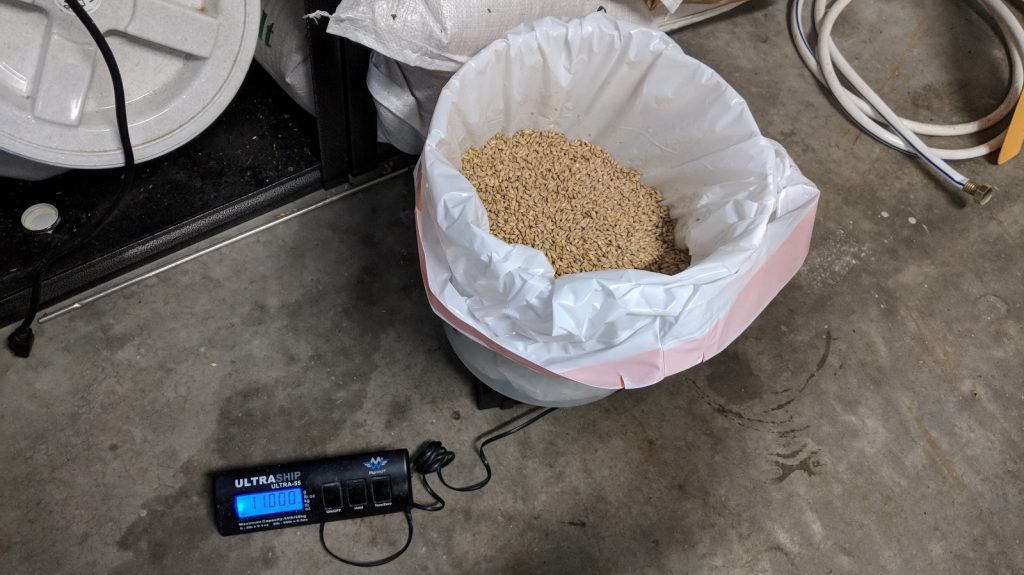
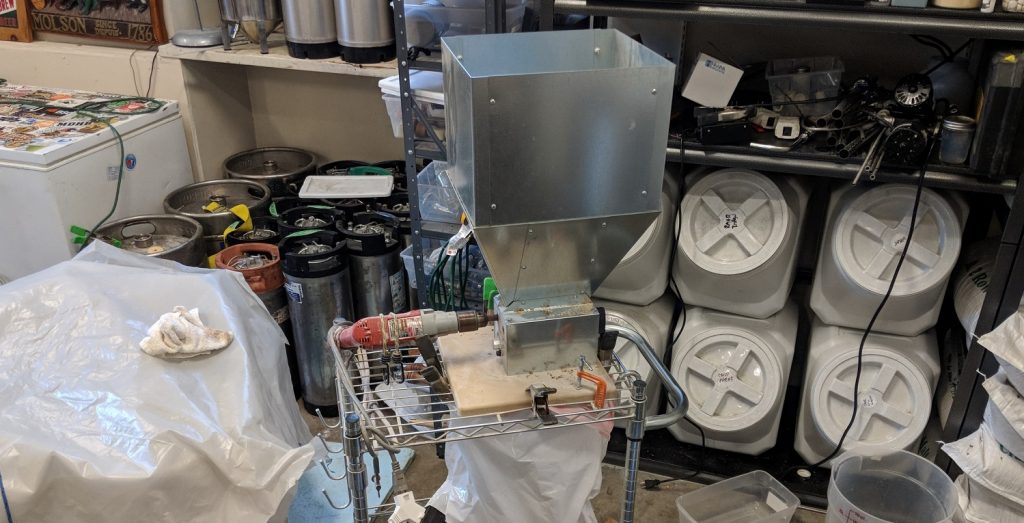
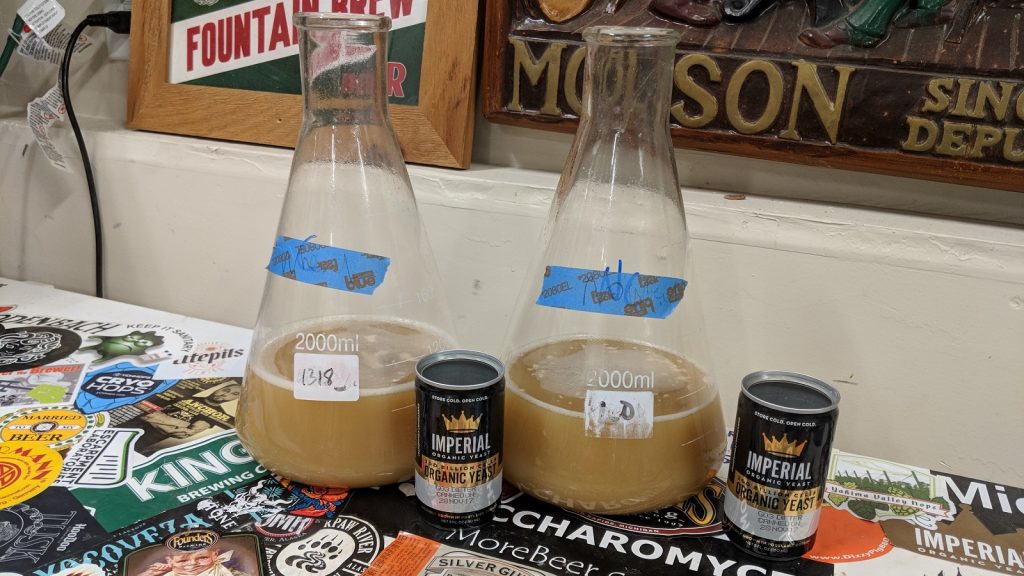










29 thoughts on “exBEERiment | Impact Wheat Malt Has On A Kölsch”
Haha, yes, wheat beer is hazy! I brewed two years ago a beer with 30% or 40% wheat, but not with a special wheat yeast. I think it dropped clear faster than my other beers!
By the way, I use wheat malt with pilsner malt in Duvel clones to obtain a paler beer.
The wheat is the clearer one!
I’d be curious to see how a similar experiment would go with rye malt. I used to add ~10% rye to my pale ales and never really noticed a difference when I got out of the habit and went back to all-barley.
Try it out and report back! 🙂
But you guys are supposed to take care of all the hard work and research. I just want to magically make good beer with zero effort. 😉
Did you see any difference in the foam stability between these two beers? The prevailing thought is that wheat malt helps with foam but I would be curious to find out if that held up in this experiment.
I would love to see a repeat of this exbeeriment with 100% wheat malt bill. Maybe a comparison of two smash ales ? Use the same hop and yeast in each …maybe something clean like us05 or wlp090 and any American hop ?
Probably not a beer I’m likely to brew soon, but if you do it I’d love to see a picture!
I made a 100% wheat beer with US-05 recently, a Grodziskie with 80% oak smoked wheat malt, and 20% helles wheat malt.
It was the clearest beer I have ever made. It was very hazy when I bottled it, but a couple of days later it was completely clear.
Fun write-up!
I thought I came across some research somewhere that wheat malt that had been processed differently produced protein of differing solubility and stability in the final beer. Maybe this is the foam stabilization and haze qualitity of wheat that wasn’t captured in this exbeeriment?
I have a theory on the wheat beer being more clear than the all barely beer. I would guess the yeast started getting pulled out of suspension due to the all the heavier wheat proteins in the wort. Also, it looks like the beers were fermented a little cooler than Imperial suggest for that strain. Although, I haven’t used Imperial (only Whitelabs), I’ve noticed kolsch strains seems to perform better in the low 60’s. This may have also contributed to the wheat beer being more clear. Just a theory. Great work as always. Have fun at Homebrew Con. Cheers 🍻
I’d like to riff on your wheat comment: Has anyone come across research that wheat processing creates proteins of different solubility and stability in beer? I recall that white wheat produced larger protein particles that more easily precipitate – how about a repeat with torrified wheat or other wheat malt product? Cheers!
Interesting theory, I was thinking along similar lines! Thanks!!
I brew hefe’s and wit’s four or five times a year. I have to believe any cloudiness that’s developed in the finished product is from the yeast. I do a Gratzer (100% smoked wheat) about once a year using 05 and after two weeks in a keg, it becomes crystal clear – no gelatin needed.
That being said, the picture of the two beers side by side is a bit puzzling. Even the FG photos show the cloudiness. I can’t believe a 0.01 difference in the pH would cause that much of a difference. Conversion? Malting of the barley? About a year ago, my LHBS turned me on to Avangard Pilsner. Other than some 6-row lagers, I don’t use any other base other than the Avangard. Great stuff.
That tartness you mention at the beginning of the article is something I’ve been trying to cover up in my hefe’s. About 7 to 10 percent Vienna or Munich usually takes care of it.
I think I might do a two gallon version using 05 instead and see what I get.
Sounds great, thanks for the feedback!
Cool experiment! Any differences in head retention?
The clarity doesn’t surprise me that much. After all, what is gelatin and how does it work? It’s a water-soluable protein that comes from collagen. It works by “grabbing” particles of the opposite charge and the larger groups of particles have a bit of a “snowball” effect, grabbing other things out of solution as they settle out. In my mind, it’s the chemical equivalent of the flocculation we see in yeast.
I’m sure you could get things out of balance to the point that wheat could have a negative impact on clarity. But in the right balance it seems entirely plausible and consistent that it would promote clarity.
The haze thing is interesting.
Can you rememver the lovibond ratings of the three malts? The hydrometer sample of the wheat beer at final gravity looks darker, so knowing the lovibonds will help double-check that the grain bags didn’t get mixed up.
The idea that wheat causes haze might be based simply on the fact that wheat beers are traditionally unfiltered and bottle conditioned. Could be nothing to do with proteins etc. Possibly another brewing myth waiting to be debunked.
I don’t recall the lovibond rating of the malts. The sample does look darker, I’m guessing due to photo lighting, if you look in the final pic they are pretty similar in color.
Yes could be lighting.
I’ve read in various places that wheat beers are lighter than all malt beers, but looking at EBC/lovibond ratings for wheat malt, they are sometimes darker than pilsner malt.
Conventional wisdom has it that adding wheat makes beer paler, softer, hazier and with better head retention. All looking questionable. Interesting stuff.
Intuitively I’d second the conclusion of haze being attributable to yeast and bottle conditioning. But for a Hefeweizen that is part of the charm., though I’ll confess that the clarity and taste conclusions in this xbeeriment stunned me.
I wonder if the wheat malt beer was cleared because since it has no husks there are less tanins present in the beer? VERY interesting though – I would have immediately said the hazy one is the wheat one!
Any difference in head retention?
Can you tell us if there was any noticeable difference in the foam stability/retention between the two beers since wheat malt is supposed to help with that?
Thanks for another great experiment. While you are on the subject of malts, I was hoping you could shed some light on chit or spitz malt. What exactly does it do? What can it replace- if anything. Does it contribute feementables?
Unrelated to xbmt, but meaning to ask: how do you guys get pix of the refractometer readings? Thanks.
I just hold the eyepiece against the rear camera lens of my phone and futz with it a little until I get a clear image. I snap a quick pic and then I can zoom in to make reading that tiny scale easier with my old eyes.
The no-wheat is a 6.7% beer and the with-wheat is 5.9%. This difference seems large enough to be a second variable and as such may be clouding the results.
Long time reader first time caller. Curious if you’ve got a pic of the wort from the ‘flaked oats vs. wheat malt’ exbeeriment prior to dry hopping to compare to this beer? The haze you got in the beer in that exbeeriment is ocounter to what happened here, curious if that’s just due to the biotransformation hops, yeast strain, combo of the two or ?? Maybe going from ~23% of the grain bill to ~27% made the difference?